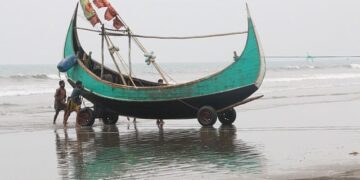Raising Awareness on Invasive Species: A Vital Initiative
Understanding Invasive Species
Invasive species are non-native organisms that, when introduced to a new environment, can disrupt local ecosystems, outcompete native species for resources, and cause significant ecological harm. Their presence can lead to the decline of native flora and fauna, altering habitats permanently. The urgency of addressing this problem has prompted various initiatives aimed at raising public awareness.
The Significance of National Invasive Species Awareness Week
Celebrated annually, National Invasive Species Awareness Week (NISAW) serves as a crucial platform for educating communities about the impact of invasive species. This event seeks to engage citizens through activities that emphasize prevention strategies and management techniques. By illuminating these issues, NISAW fosters proactive measures in curbing the spread of harmful invaders.
Educational Outreach Initiatives
Around the country, local organizations participate in events such as workshops and informative sessions during NISAW. These initiatives highlight how individuals can contribute to protecting their ecosystems by learning how to identify invasive species in their surroundings. Furthermore, community members are encouraged to report sightings of invasive plants or animals so proper action can be taken.
Statistics Highlighting The Problem
Recent findings from environmental research institutions indicate that approximately 42% of endangered species are at risk due primarily to invasive organisms—an alarming statistic underscoring the importance of public awareness efforts like NISAW.
Community Engagement Activities
Several activities complement education efforts throughout NISAW week:
- Cleanup Drives: Programs where volunteers remove invasive plant species from natural areas.
- Workshops: Sessions designed around identifying invasive versus native plants.
- Social Media Campaigns: Utilizing hashtags (e.g., #InvasiveSpeciesAwareness) encourages broader participation online.
These strategies not only promote knowledge but also mobilize community members towards conservation action.
Long-term Implications
The ramifications posed by neglected invasives extend beyond mere biodiversity loss; they impact agriculture and fisheries through competition for resources essential for both industries’ health and sustainability. According to recent estimates from economic studies, the cost associated with controlling these species runs into billions annually—a reminder that proactive engagement is beneficial not just environmentally but economically too.
Taking Action Beyond NISAW
While National Invasive Species Awareness Week plays an instrumental role each year in fostering understanding and action against invasives, ongoing vigilance is paramount year-round. Home gardeners can adopt practices such as choosing native plants over exotic imports or joining local conservation groups focused on ecosystem restoration efforts.
Conclusion
Addressing the scourge posed by invasive species requires collective effort at all societal levels—from grassroots movement leaders running educational programs to policymakers laying down regulations on importation practices based on rigorous ecological assessments.
For every individual taking part during National Invasive Species Awareness Week—or advocating beyond it—the pathway toward healthier ecosystems becomes clearer contributing drastically towards preserving our natural heritage for future generations!




















![Forest ecology cannot be reduced to arithmetic, says M.I. Varghese [Interview] – Mongabay-India](https://earth-news.info/wp-content/uploads/2025/12/328946-forest-ecology-cannot-be-reduced-to-arithmetic-says-mi-varghese-interview-mongabay-india-350x250.jpg)










![Forest ecology cannot be reduced to arithmetic, says M.I. Varghese [Interview] – Mongabay-India](https://earth-news.info/wp-content/uploads/2025/12/328946-forest-ecology-cannot-be-reduced-to-arithmetic-says-mi-varghese-interview-mongabay-india-120x86.jpg)